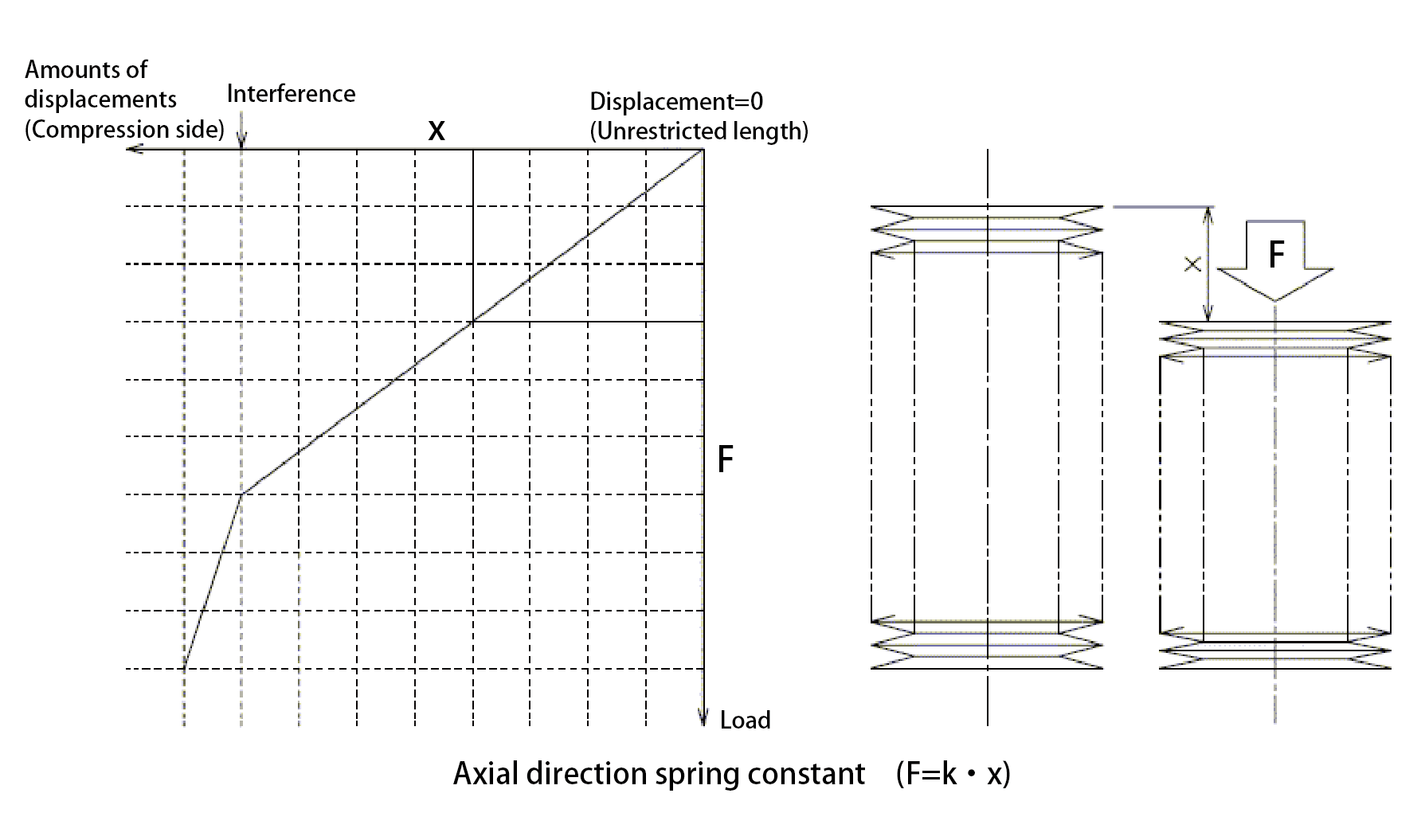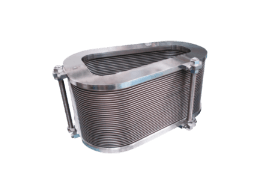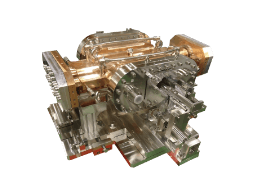- HOME
- HOME
- Technical Information
- Bellows glossary
- About spring properties
About spring properties
Spring properties are one of the features of bellows. Spring properties determine a good part of product shape. Terminology related to the spring properties are shown.
About spring properties

※左右にフリックしてご覧いただけます。
| Name | Description |
|---|---|
| Axial direction spring constant |
Load required for 1mm displacement in an axial direction, showing an almost constant value load elasticity regions, while changing when the pulling force tends toward plastic deformation with a large displacement or where corrugations interfere near adhesion; mostly used in an almost constant range, while being used under interference depending on specification conditions. (On bellows, the axial direction spring constant decreases in the following cases: small thickness, large span, many threads, etc.) |
| Perpendicular-to-an-axis direction spring constant |
Load required for 1mm displacement in a perpendicular-to-an-axis direction, decreasing with increasing face-to-face dimension in proportion to the axial direction spring constant. |
Meandering and buckling |
Flexion of bellows by application of a contraction side force from internal pressure or unrestricted length. The pressure at which buckling occurs varies according to the spring constant, bellows length, etc. Meandering --- The deformation, which is apparent curvedness, is restored by removing the load. Buckling --- The deformation, which is advanced meandering, is not restored even when the load is removed. Normally, a design is made in a buckling-free range, but if it cannot be absorbed by one block, support is provided by intermediate fittings as another multiblock structure. |
| Natural frequency | Bellows also have a natural frequency that is detected when subjected to free vibration. If a resonance phenomenon occurs, an unpredictable load is applied to the bellows, which can cause premature damage. |
Glossary of bellows terms
Product Information List
Inquiry
For document requests and inquiries,
Please contact us using the email form below or by phone.



